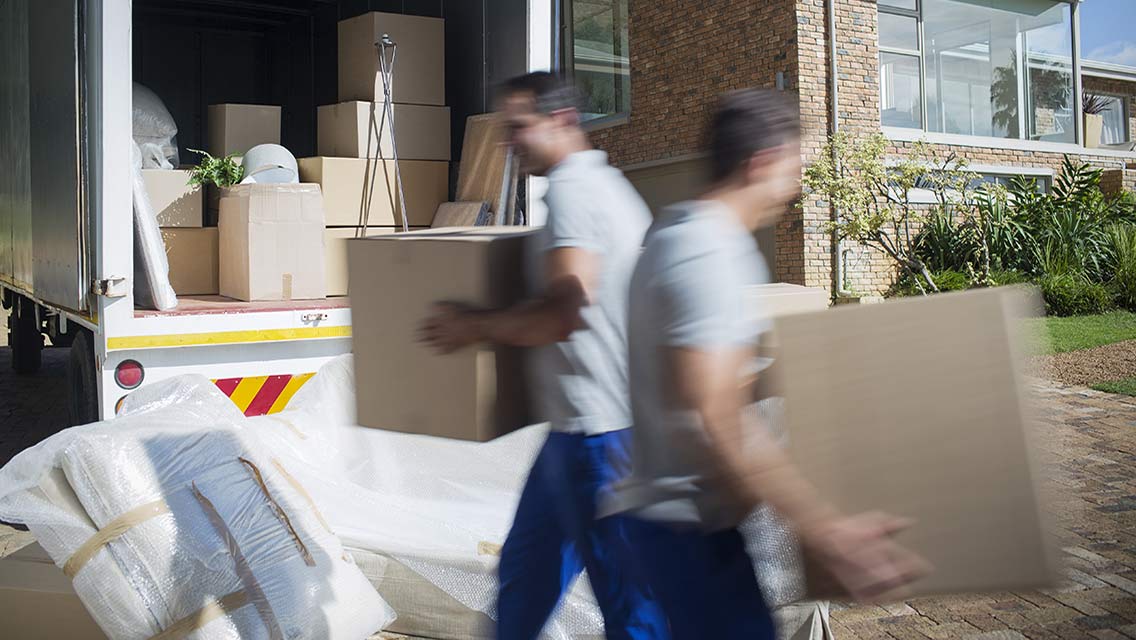Last fall, I spent the better part of a Saturday helping my son transfer a small houseful of his family’s surplus belongings from a storage unit in my Minneapolis neighborhood to one closer to his home across the river in St. Paul. This involved renting a large truck, securing a dolly, and engaging in a good deal of heavy lifting. I returned home sweaty and stiff later that afternoon and announced to My Lovely Wife that I would never move again. “They’ll have to carry me out of here feet first,” I proclaimed.
This is not an uncommon preference among my geriatric peers. Nearly nine out of 10 respondents to a 2022 survey conducted by the University of Michigan’s Institute for Healthcare Policy and Innovation reported that it was important to them that they remain in their homes as long as possible. Despite their good intentions, however, only 15 percent of these older adults said they’d given serious thought to how they’ll need to modify their digs in order to safely stay put.
“Most houses weren’t built to support the needs of people across the many stages of life,” notes Indira Venkat, senior vice president of research at AARP, which cosponsored the poll. “The best way to continue living in the home you love is to plan ahead and make changes that will accommodate your needs today and in the future.”
Most of those polled said the main floor of their home included a bedroom (88 percent) and bathroom (78 percent), reducing the amount of stair-climbing — and the risk of falls. But other safety features, such as bathroom grab bars (32 percent), barrier-free showers (7 percent), and personal emergency response systems (10 percent) were much less prevalent. About one in 10 respondents admitted that clutter made it difficult to safely navigate the main rooms in their home.
And even if you’ve equipped your abode with all the necessary safety features, you may someday need a little — or a lot — of help with day-to-day activities. About half of the respondents who live alone said they didn’t know who they would turn to for help dressing or bathing. And only one in five believed they could afford to hire someone to help with their personal care needs as well as with grocery shopping, financial management, and other tasks.
“The pandemic’s impact on older adults, and policy proposals about home-based services at the federal and state level, mean this is a topic of immediate importance,” says Sheria Robinson-Lane, PhD, an assistant professor at the University of Michigan School of Nursing who coauthored the survey report. “Especially for those without as much social support, or with more health needs, it’s important to take a proactive approach and plan for the future now.”
“[It’s] important to take a proactive approach and plan for the future now.”
MLW and I are generally in accord about the sort of changes necessary to make our home more elderly friendly. Our second-floor bathroom was recently completed, a major investment that means she won’t have to carry a small bucket of water to her upstairs studio every time she works on some water-color painting, and neither of us will have to rush down the stairs when nature calls. It also offers a basic amenity for a live-in caregiver should we abandon our workspaces and descend to a main-floor life sometime down the road.
Our opinions are less aligned when the subject of other types of hired help arises. MLW has long lobbied in vain for paying someone to clean the house, a task I’m perfectly willing and able to perform every couple of weeks (dusting optional). And she’s recently complained that her gimpy knees prevent her from maintaining our gardens as dutifully as she would prefer, suggesting that we may someday need to hire a gardener — despite my stellar weed-pulling skills (plant identification optional).
I have, however, come around in recent years to her point of view on household maintenance. We recruited a neighborhood handyman in recent years to complete a couple of small construction projects that I once would’ve slapped together myself. And we’ve agreed that we’ll hire a crew to repaint the house and garage; even I admit that it was quite a chore when I spruced up the old place more than 10 years ago.
As much as we hope these and other strategies — yoga, cardio, strength training — will allow us to age in place, we both know there are no guarantees. Life is a crapshoot. So, I was heartened the other day to learn about companies that specialize in moving elderly homeowners into more-easily maintained abodes.
Writing in the New York Times, Paula Span describes how Ray and Beth Nygren, 87 and 85 respectively, downsized from a 2,400-square-foot home in Auburn, Wash., to an assisted-living unit half the size with the help of one of these specialized moving companies. They were reluctant to move after living 20 years in the same place, but both were coping with chronic illnesses and Beth had recently taken a fall. “They considered it a very minor thing, but it was really eye-opening for us,” their daughter tells Span. “One more fall could make a huge difference in their lives.”
The prospect of winnowing 65 years of collected belongings into an assortment that would fit into a much smaller space — much less packing it all up and setting up a new household — overwhelmed the couple’s three kids and sent them searching for help. The retirement facility recommended a mover that would basically handle everything but the winnowing. It can be a pricey option: Hourly rates range from $65 to $125, and the family initially balked at the mover’s $5,400 bid. But it turned out to be money well spent.
“We walked in, and it was like walking into your home,” Beth recalls. “Everything was in place: clothes in the closet, pictures on the wall, stuff in the drawers. You could just start living.”
I prefer to continue living right here, where my stuff is already in the drawers and the art is already on the walls. But if at some point MLW and I are forced by circumstances beyond our control to abandon this place, you can bet on one thing: I won’t be doing the heavy lifting.





This Post Has 0 Comments